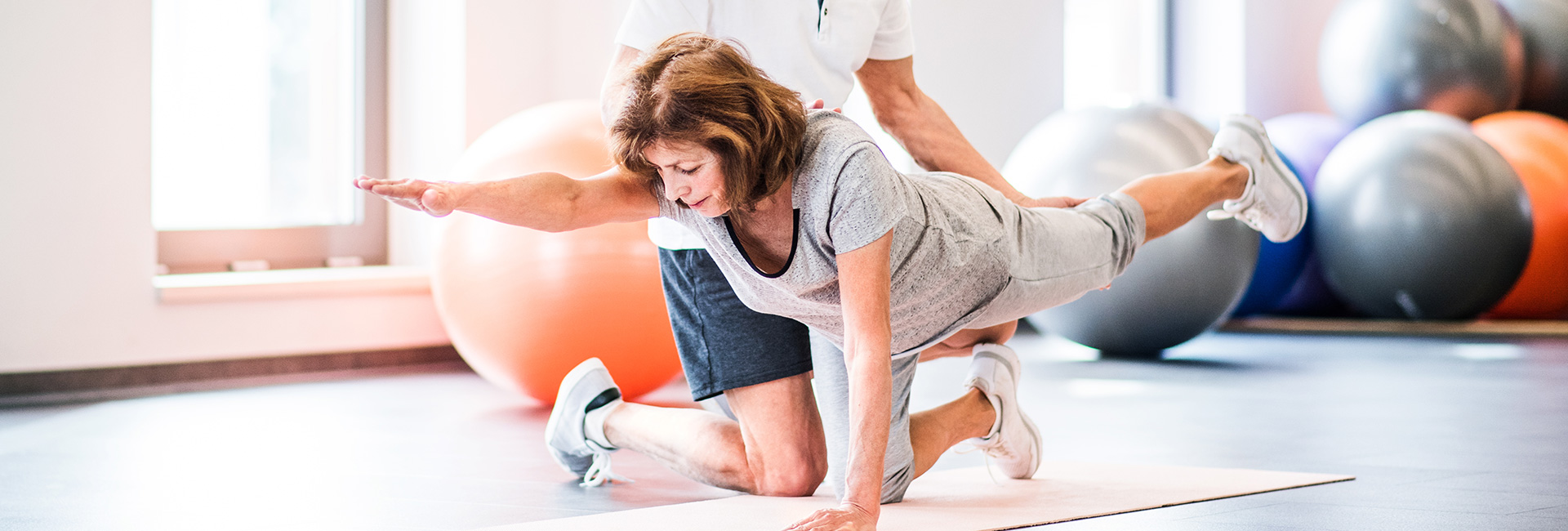Low Back Pain (LBP) is a common and recurrent problem. It has been estimated that approximately 80 percent of people will experience debilitating low back pain at some point in their lives. Research has found that most of these acute LBP episodes will calm down significantly within two to four weeks. Additionally, the good news is that usually, even if the pain is very intense, the pain does not represent a serious medical problem in your back that might require advanced imaging studies (CT/MRI) or invasive procedures such as surgery to correct.
Patients are often given medications to help calm down the acute pain episode but most often they are not referred to a physical therapist to evaluate the underlying mechanical issues causing the pain. This is a common care pathway error in our medical system, and it leads to more chronic pain, higher medical costs and oftentimes unnecessary and more invasive medical procedures. Even though the acute level of pain may resolve, the underlying mechanical problems are often still present and nagging pains can persist for most patients. Research has also shown that within one year following the first episode of LBP, 60-80 percent of people will have another episode of debilitating pain.
Correctly retraining the inner core muscles has been shown to help prevent this recurrence pattern. The term “core training” is poorly defined and can be confusing because the term can mean many things depending on who you talk to and their background and anatomical understanding. It is critical to recognize that there are important distinctions between stabilization exercises used for therapeutic reasons and trunk strengthening exercises that are used for sports and conditioning.
Specific core muscle training for low back pain
All core exercise programs involve the trunk muscles, but research has shown that the various muscles of the trunk have specific functions. Some act as position sensors, some act as stabilizers of the spine, and others generate larger body movements.
Functionally, the trunk muscles can be divided into two major groups—the larger outer muscles (“global” muscles) and the smaller inner muscles (“local” muscles). Most non-therapeutic core training programs focus on the large outer trunk muscles that you can see. These muscles span multiple spinal levels and mainly run between the rib cage and pelvis.

While strength in these global trunk muscles is very important for overall function and athletic performance, they are primarily movers of the spine and are not attached in such a way that they can effectively control alignment or motion between vertebrae. Thus, while this type of “core training” may give you “6-pack abs” and improve athletic performance, by itself it is likely missing the mark if you are trying to relieve your low back pain and prevent future problems.
Research on low back pain has demonstrated that the structure and function of the inner core muscles is commonly altered even after the first episode of low back pain. The messages from the nervous system to the muscles that tell these muscles when and how to activate become short circuited, and these muscles essentially go offline.
Furthermore, studies have shown that recovery of these deep trunk muscles does not spontaneously happen, even if the acute pain resolves and normal activities are resumed (this is true even in highly trained athletes whose outer core muscles are strong). The recovery and normal firing pattern of
these deep muscles is only restored if they are specifically retrained in most cases. When people are instructed in how to properly contract these inner core muscles during activity, there is a significant decrease in both intensity and recurrence of low back pain episodes.
What are the inner core muscles?
Most research emphasizes the role of the transversus abdominus and lumbar multifidus muscles in chronic low back pain. The pelvic floor and diaphragm muscles have also been implicated as being important in segmental stabilization of the spine and pelvis. Dysfunctions in these muscles can also alter breathing patterns and cause pelvic floor pain or stress incontinence symptoms as all these muscles work together as part of an integrated system.
All joints of the body, as with any other joint (such as a door hinge), must remain properly aligned for the joint to track correctly and avoid abnormal wear and tear. In the spine, joint stability refers to the ability of the joint to move through its full range in a pain free and controlled manner, without excessive or abnormal motion.
The joint structures (ligaments, discs, and facet joints) by themselves are not able to ensure normal joint tracking. The spine relies heavily on the motor control provided by the nervous system and correct muscle firing patterns as well as connective tissue (fascia) tensional balance to maintain proper alignment and support. Because these inner core muscles are close to the spine and attach to adjacent or nearby vertebrae, they are structurally able to stabilize one vertebra on another, guiding their motion and protecting the joints against damaging or painful movements.

Physical therapy for low back pain relief
Low back pain, while extremely common, can be debilitating. If you have low back pain of any kind you should seek care from your local physical therapist to help you get over the problem quicker and prevent future dysfunction and episodes. Physical therapists are specially trained in assessing the function of the deep core muscles and your spinal mobility, stability, and posture. After assessing your individual biomechanics, your therapist will put together a program of exercises specific to your problem and guide you in how to fire your muscles correctly, progressing your activity in a pain-free and safe manner. Manual therapy interventions may also be needed to mobilize stiff or tight areas around your spine to normalize your spinal mechanics. There may also be the need to retrain the sensitivity of your nervous system to reduce pain levels and avoid chronic pain patterns.
A typical progression of therapeutic core training would involve a therapist teaching you how to find and activate these smaller and deep muscles in a controlled way, involving minimal spinal motion at first. As you become more skilled at activating these deep muscles, your therapist would then progressively challenge them to stabilize your spine in different planes of motion with increasingly more dynamic exercises related to your functional activities and personal goals.
While most people with LBP will benefit from consultation with a physical therapist, people with pain due to spine problems that disrupt the structural integrity or motor control of the spine (such as degenerative disc disease, arthritis, underlying hypermobility, or back pain following pregnancy or patients that have stress incontinence and LBP) may especially benefit from a therapeutic core training program that emphasizes activation of these deep inner core muscles.
Start your journey to pain-free living today.
Our experts are committed to providing effective, efficient, and compassionate care to help you live a pain-free, active life. Our passion is to help every patient reach their goals on their journey to recovery and optimal performance.


